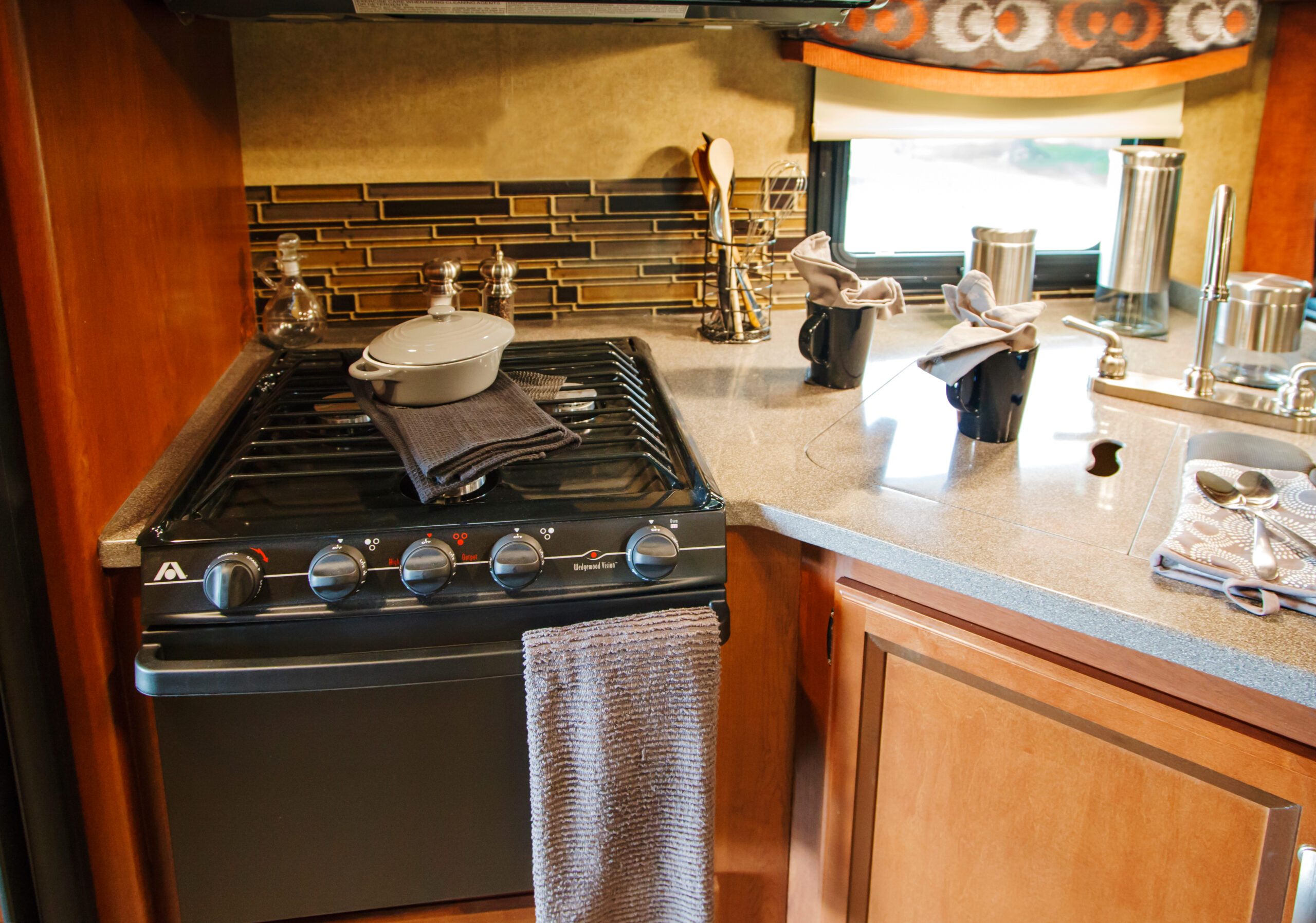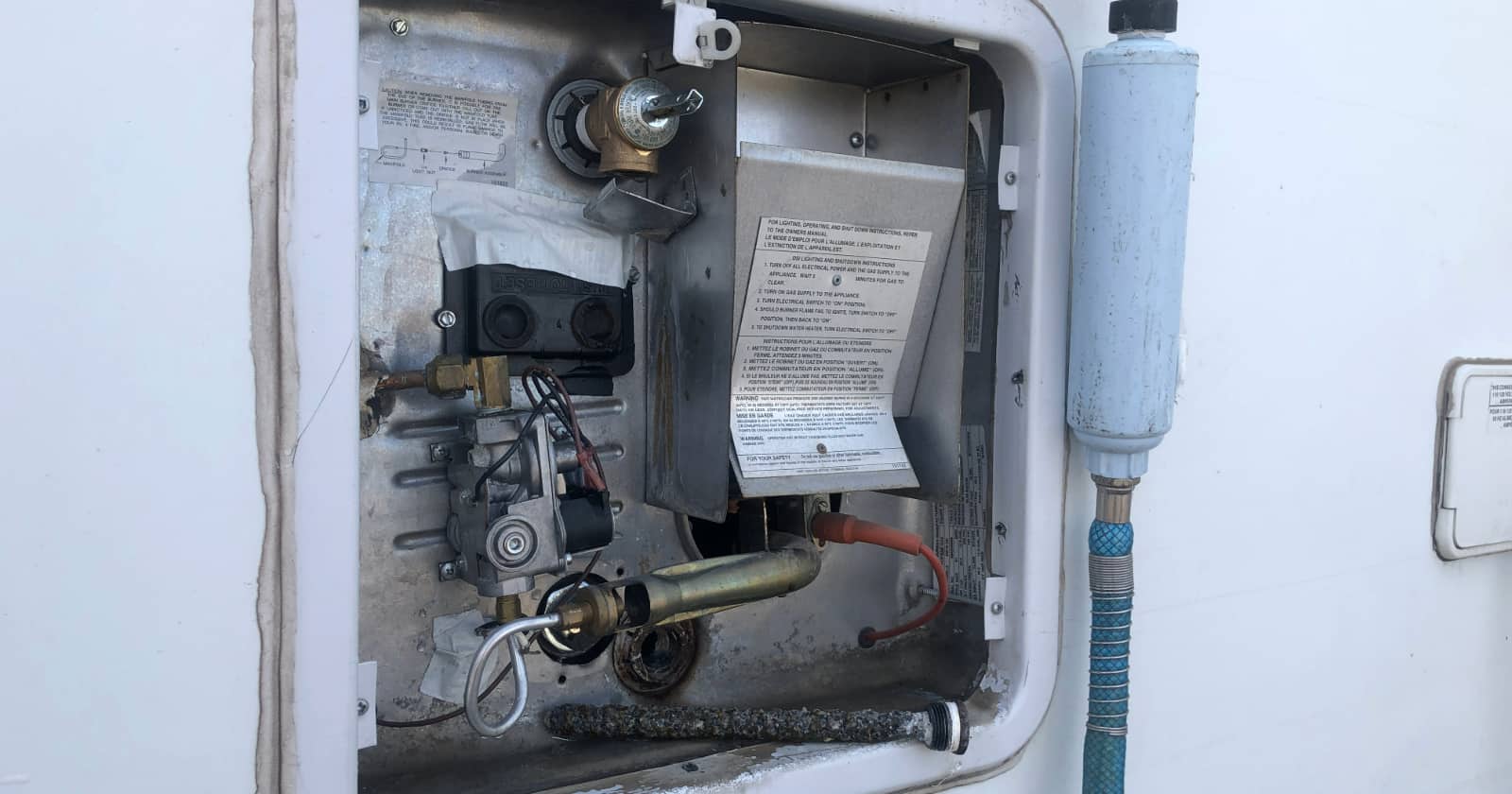
Upgrade Your RV With New RV Wallpaper
Wallpaper is back! But was it ever really gone? At one time, wallpaper covered the walls of homes all over the world. This eventually gave way to boring painted walls in white, taupe, and light gray.
Like homes of the past, RVs had some colorful patterns and character at one time as well. Modern RVs are more neutral and white, and lightly shaded walls have become the norm. Whether it’s a new RV or a remodel, people are looking to add some spice to their RVs.
Wallpaper is a great way to add some color and patterns to an otherwise cookie-cutter RV interior. We have all heard about and watched videos of wallpaper fails (picture the guy on a ladder with wet wallpaper draped over his head). So, how do you install new RV wallpaper?
RV wallpaper options
Before you start choosing colors and patterns, you will have to decide which type of wallpaper to use. Wallpaper is most commonly found in rolls with a glue backing that is activated with water. A similar product is available that requires the adhesive to be rolled on the wall first and the paper put on dry. But peel-and-stick is now a popular option, especially for small areas such as RVs.
Traditional wallpaper adheres to the surface with glue, making for a semi-permanent application. If you’ve ever scrapped and peeled wallpaper to remove it, you know what I mean. The wallpaper is soaked in warm water and then applied to the surface using pressure to remove air bubbles and ensure complete contact. The paper can be moved around in the moments after it makes contact, but it begins to dry and becomes bonded pretty quickly.
Once fully cured, which can take a few days, traditional wallpaper (if installed properly) will stay adhered for many years.
Peel-and-stick wallpaper is a popular option for RVers as it requires no water and it is mess-free. Once stuck, peel-and-stick wallpaper can be peeled off and reapplied if a mistake is made; however, this may affect the adhesive, so don’t get too careless.
Most peel-and-stick wallpaper is actually not paper at all but vinyl. This makes it easy to clean and remove if necessary. For these reasons, peel-and-stick is the most popular choice for RV wallpaper.
How to install new RV wallpaper
Regardless of which type of wallpaper you choose, the first and most important steps will be the same. The surface you are applying the wallpaper to must be clean and smooth.
Wallpaper is very thin, so any imperfections underneath it will show through. Dirt, nail heads, and runs in the paint will all form a bump in your new wallpaper. Any voids in the surface can also be seen through the wallpaper, so using filler on any spots is recommended.
If there is already wallpaper on the surface, it should be smooth and well-adhered if you plan to go over the top of it. Check the edges and seams to ensure they are still fully adhered. Wipe down the wallpaper and let it fully dry before starting.
If applying wallpaper directly to RV panels, it is beneficial to use some light sandpaper and scuff the surface. RV wall paneling generally has a slick, smooth finish that can be tricky to get a strong bond to. This is especially true if using peel and stick.
No special tools are needed, but some cheap wallpaper tool kits can make the job easier. If you have a box cutter and a credit card, these will do the same thing.
Traditional wallpaper
With the surface prepared, you can get your hands wet and start applying wallpaper. Recommendations for application will be available from the manufacturer or the store you purchase from. The process will look something like this:
- Pre-cut pieces are soaked in warm water for a suggested time to activate the adhesive.
- If using the dry type, roll adhesive on the section of wall you are working on.
- Carefully align the top edge of the wallpaper and press it in place.
- Working from top to bottom, smooth the paper forcing any bubbles out the sides.
- Apply pressure to ensure the paper is flat, and make cuts if necessary.
- Make any final adjustments to the piece.
- Continue the process to the remaining pieces.
Peel-and-stick
- Pre-cut pieces where needed.
- Peel back the top few inches of the backing.
- Apply top edge to the surface.
- Slowly peel the backer and smooth the piece onto the surface.
- Make corrections as you go, peeling back if you have to.
- Double-check placement and use pressure to smooth and fully adhere the piece.
Problems with RV wallpaper
Opening up your RV for the first time after winter storage is an exciting time. However, seeing the wallpaper you worked so hard on last year in a pile on the floor is not so exciting.
The adhesive used on wallpapers isn’t designed for extreme temperatures. This is especially true for peel-and-stick products. This is a consideration to make if your RV is stored outdoors in cold temperatures. Traditional wallpaper may not be as susceptible to this, but it can still be an issue. Areas of high humidity can also be tough on wallpaper products.
Wallpaper, especially the peel-and-stick kind, is a relatively cheap and easy way to change the feel of your RV. It’s also pretty forgiving to work with, as long as you don’t crease it or have it fold over and stick to itself.
RVs, unlike houses, don’t have large open walls to cover, so wallpaper projects in RVs are generally smaller areas, making it an easy DIY task.
Make sure you keep track of all your RV maintenance and repairs with an online tool such as RV LIFE Maintenance. Not only can you keep all of your documents in one place, but you’ll also receive timely reminders when maintenance is due to help you avoid costly repairs and potentially serious accidents.
Continue reading:



